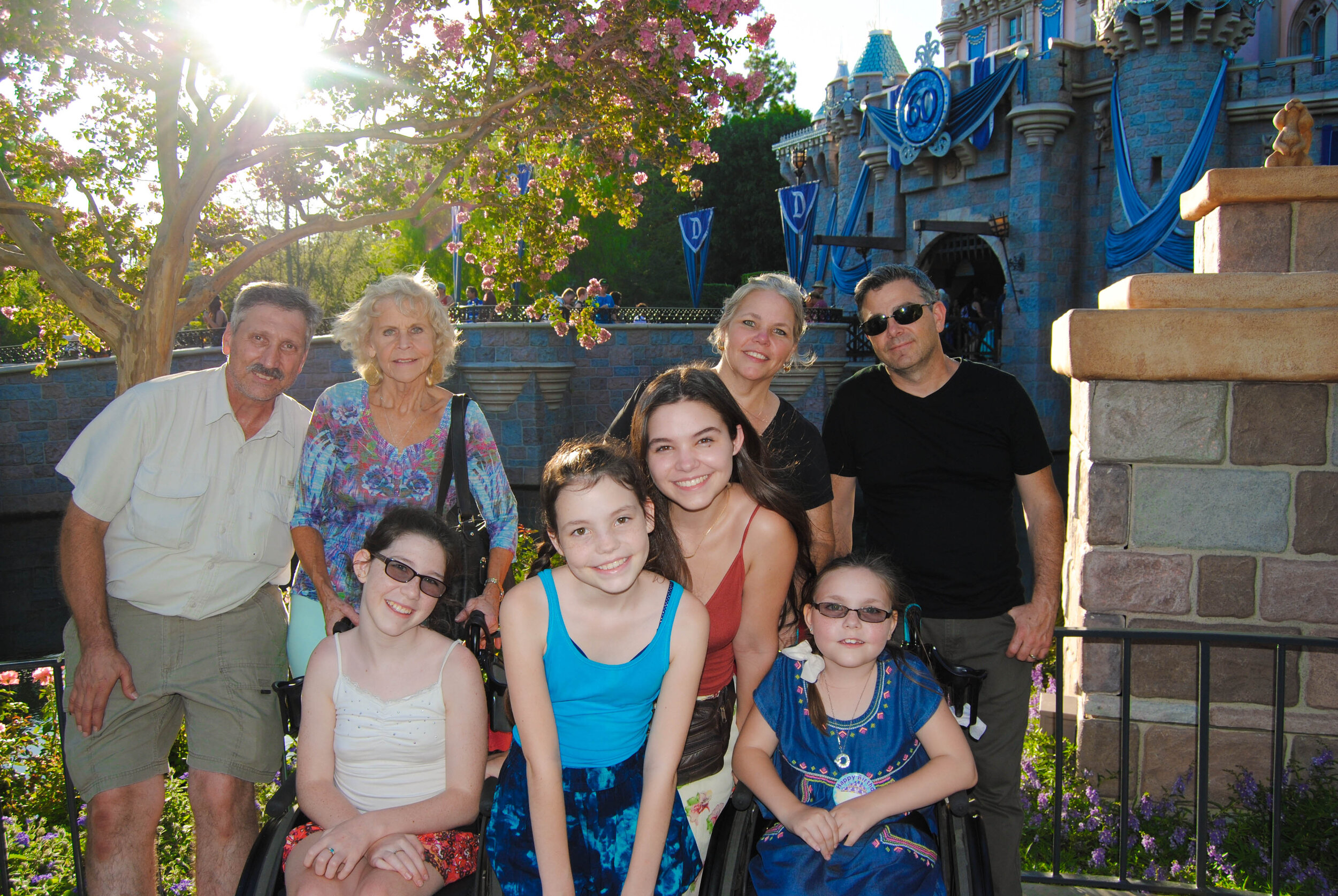
Our Story
Hi, and welcome to our family page! We are the McLaughlin family, and this is our story.
On September 29, 2002, baby Marissa was nine months old. Marissa had taken her first steps and walked for three days when she had her standard nine month vaccinations. Within hours of leaving the pediatrician’s office, Marissa’s parents and big sister noticed that Marissa could no longer hold her head up. Her toes were pointed and her fists balled. At a local hospital in Baton Rouge, LA, the resident neurologist gave Marissa the diagnosis of Vanishing White Matter disease. Our family was told to treat everyday like Christmas, because Marissa wouldn’t make it to December.
Horrified and deeply heartbroken, our family rushed Marissa to Tulane in New Orleans for a second opinion. It was here that we received confirmation of a mother’s instinct — Marissa did not have Vanishing White Matter Disease. The collective sigh of relief was enough to be heard from Mississippi. Unfortunately, that’s where the answers ended. This began an eleven year journey of searching for a diagnosis.
Having been reassured that it was not a genetic disease, parents Janice and Gary McLaughlin had another daughter Mallory, who was — as predicted — a typically developing child and showed no signs or symptoms pointing otherwise, just as her oldest sister, Madison. In 2006, the McLaughlin family welcomed another baby girl: Mahrynn. Mahrynn was crawling and cruising as many happy babies do, until we noticed a regression in her mobility in December of 2007. There was an immediate MRI done, and when the results came back, it was undoubtedly clear. Mahrynn’s MRI was nearly identical to Marissa’s.
With this new discovery, we shifted gears entirely and realized that what we were dealing with was, indeed, a genetic disorder. It was one so rare that it was seemingly impossible to nail down the diagnosis. Finally, in March of 2013, we received the call we’d waited over a decade for. There was a family in Australia who had funded research for their own child’s undiagnosed leukodystrophy. They had found the exact abnormal gene, and they were hoping to get bloodwork from the McLaughlin family to see if it was a match. After weeks of waiting, we got the news. It was a perfect match.
They named the disease Hypomyelination with Brainstem and Spinal cord involvement and Leg spasticity — or HBSL for short.
Marissa and Mahrynn had HBSL. Janice, Gary, and Mallory are carriers of the disease.
The funny thing about not having a diagnosis, is that you pray for answers in the form of a diagnosis. Then, you get that diagnosis, and instead of answers, it just opens a whole new world of questions. Treatment, therapies, lab work, surgeries, and procedures seemed to only increase after receiving the new diagnosis. There are less than twenty people globally diagnosed with HBSL, and Marissa is one of the oldest patients currently diagnosed. We are constantly searching for treatments to slow the progression of the disease, though with the diagnosis being so young, we still have a lot to learn.
Currently, the McLaughlin family is residing in Los Angeles, California. Marissa, Mallory, and Mahrynn are all teenagers.
This whole page would be severely lacking if we do not recognize the work of our beloved Australian family and the revolutionary scientific researcher who gave us our diagnosis. The Damiani family — Stephen, Sally, Massimo, Marco, and Leonardo — fought to find a diagnosis and cure for Massimo, the first ever child diagnosed with HBSL. They partnered with Dr. Ryan Taft and Dr. van der Knapp, who worked tirelessly to provide them with their (and our) diagnosis. Dr. Taft used whole genome sequencing to discover HBSL, and continues his work of whole genome sequencing for many rare undiagnosed genetic disorders at Illumina Inc. in San Diego, California.
Massimo Damiani was an angel and gift to the world, and our family is forever indebted to him. We hope to honor his memory with our work through the MacPac Foundation.